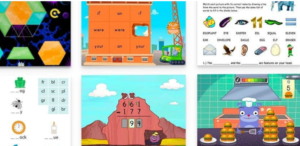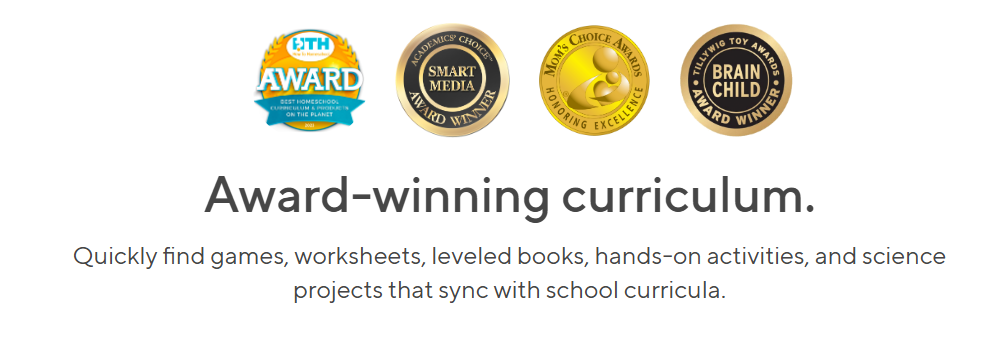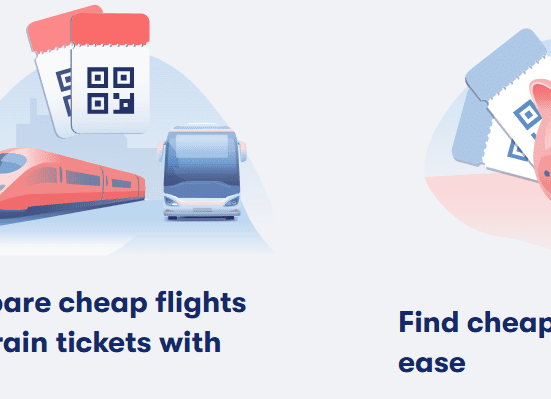Introduction to creativity in the classroom
Creativity is the heartbeat of early childhood education. It fuels curiosity and encourages young minds to explore, dream, and invent. In a world where traditional teaching methods often dominate, infusing creativity into the classroom can unlock a treasure trove of learning opportunities for preschoolers. Imagine children not just memorizing letters or numbers but expressing themselves through art, storytelling, and interactive play.
This blog post takes you on an exciting journey through some of the best pre-K educational websites that promote creative learning activities. From engaging games to imaginative projects, we’ll uncover how these resources can inspire both educators and little learners alike. Get ready to transform your classroom into a vibrant space bursting with creativity!
Creativity is the heartbeat of any classroom. It fuels imagination, encourages problem-solving, and fosters a love for learning. In Pre-K settings, where young minds are just beginning to explore the world around them, creativity can make all the difference. Engaging activities not only capture children’s attention but also allow them to express themselves freely.
Imagine a space filled with laughter as kids mix colors at an art station or discover new textures during sensory play. These moments ignite curiosity and inspire lifelong learners. With so many educational websites dedicated to fostering creativity in early childhood education, teachers have a treasure trove of resources at their fingertips.
Let’s dive into some inspiring activities that will transform your classroom into a hub of innovation and fun!
Benefits of incorporating creativity in early childhood education
Creativity in early childhood education sparks curiosity. It encourages young minds to ask questions and explore their surroundings. When children engage in creative activities, they learn to think critically.
Creative experiences help develop problem-solving skills. Kids face challenges when creating art or playing games, which boosts their ability to find solutions independently. This builds confidence as they navigate obstacles.
Incorporating creativity also enhances emotional development. Children express feelings through various forms of art, allowing them to articulate emotions that might be difficult to verbalize otherwise.
Social skills flourish in a creative setting too. Group projects foster collaboration and communication among peers. Children learn the value of teamwork while sharing ideas and resources.
Creativity promotes cognitive growth by stimulating imagination and innovation. These foundational skills are essential for lifelong learning and adaptability in an ever-changing world.
Creativity in early childhood education is more than just fun. It plays a vital role in children’s overall development. Engaging activities stimulate young minds, fostering critical thinking and problem-solving skills. When children create, they learn to express themselves and explore their emotions.
Incorporating creative tasks helps improve social skills as kids collaborate with peers on projects. They share ideas and support one another, building friendships along the way. This interaction also enhances communication abilities, laying a strong foundation for future learning experiences.
Furthermore, creativity nurtures imagination which is essential for cognitive growth. Kids who engage in imaginative play often develop stronger reasoning skills later on. They become adept at seeing multiple perspectives—a crucial skill that will serve them throughout life.
Embracing creativity can make learning enjoyable for both teachers and students alike. A vibrant classroom filled with art supplies or music instruments invites exploration and curiosity, sparking a lifelong love of learning in every child. The benefits are clear: when we prioritize creativity in education today, we equip our youngest learners for success tomorrow.

Top pre-K educational websites for creative learning activities:
In today’s digital age, pre-K educational websites are treasure troves of creativity. They offer engaging resources that spark imagination and exploration in young minds.
ABCya! stands out with its interactive games and puzzles. Kids can dive into fun challenges that strengthen their problem-solving skills while having a blast.
PBS Kids takes a different approach by focusing on art and craft projects. Here, children can unleash their inner artists with various activities that encourage expression through colors, shapes, and textures.
Scholastic shines when it comes to storytelling and imaginative play. Their resources inspire kids to create narratives where they become the heroes of their own tales.
These platforms not only facilitate learning but also nurture creativity in ways that resonate deeply with preschoolers. Each website provides unique opportunities for hands-on experiences tailored specifically for little learners.
Sample activities from each website:
ABCya! offers a variety of interactive games that make learning fun. Children can explore letters and numbers through engaging puzzles. These activities encourage problem solving while boosting their confidence in foundational skills.
PBS Kids is a treasure trove for budding artists. With guided art projects, kids can express themselves creatively using simple materials at home. From painting to crafting, these hands-on projects stimulate imagination and fine motor skills.
Scholastic focuses on storytelling and imaginative play. Their resources prompt children to create narratives with diverse characters and settings. This not only enhances language development but also fosters critical thinking as they navigate their stories’ plots.
These websites provide endless opportunities for creativity, making early education both enjoyable and enriching.
A. Interactive games and puzzles on ABCya!
ABCya! offers a treasure trove of interactive games that spark creativity in young minds. Each game is designed to engage children while helping them develop essential skills.
Logic puzzles challenge problem-solving abilities, allowing kids to think critically as they navigate fun scenarios. The colorful graphics draw attention and keep little learners excited for more.
Games like “ABCya Paint” encourage artistic expression through digital drawing tools. Children can let their imaginations run wild, creating unique masterpieces without the mess of traditional supplies.
Moreover, these activities promote collaboration when played in groups. Friends can team up on challenges or compete in friendly matches, enhancing social skills along with cognitive development.
Interactive gameplay fosters an environment where learning feels effortless and enjoyable, making ABCya! a go-to resource for educators seeking creative ways to enrich their classrooms.
B. Art and craft projects on PBS Kids
PBS Kids is a treasure trove for budding artists. Their art and craft projects are designed to spark imagination and encourage hands-on creativity.
From simple drawing prompts to elaborate DIY crafts, there’s something for every little creator. Children can explore different mediums like painting, collage-making, or even recycled art. These activities not only promote artistic skills but also enhance fine motor development.
One standout project involves creating puppets using everyday materials. Kids can express their stories and characters through playful performances, blending art with storytelling in an engaging way.
With guided tutorials featuring beloved PBS characters, children stay motivated and inspired throughout each activity. The website fosters a sense of accomplishment as kids see their artwork come to life.
Through these creative endeavors, young learners gain confidence while having fun—all essential elements in early childhood education.
PBS Kids offers a wealth of resources for teachers and parents looking to incorporate creative activities into their curriculum. Their art and craft projects are designed to spark imagination while reinforcing essential skills.
One standout project is the “Nature Collage.” Children can gather leaves, flowers, and other natural materials during a walk outside. Once back in the classroom, they can glue these items onto paper to create stunning collages that reflect their surroundings. Not only does this activity foster creativity, but it also encourages exploration and appreciation for nature.
Another engaging option is the “Recycled Art” project. Using everyday items like bottle caps, cardboard boxes, or old magazines creates opportunities for children to think critically about reusing materials while expressing themselves artistically. This hands-on approach teaches valuable lessons in sustainability along with artistic techniques.
These projects not only provide fun but also cultivate important social skills as kids collaborate on group tasks or share their creations with classmates. By integrating art into early education through platforms like PBS Kids, we empower young learners to express themselves freely while developing key cognitive abilities.
Fostering creativity within classrooms helps build confident individuals prepared to tackle future challenges head-on. The impact of such activities goes far beyond the classroom walls; they lay a foundation for lifelong learning experiences filled with curiosity and innovation.


C. Storytelling and imaginative play on Scholastic
Storytelling and imaginative play are essential components of early childhood education. Scholastic offers a wealth of resources that encourage these activities, making it an invaluable destination for pre-K educators.
One engaging activity on Scholastic is the “Create Your Own Story” feature. Children can choose characters, settings, and plots to build their unique tales. This not only nurtures creativity but also strengthens language skills as they learn to express their thoughts in written form.
Another fantastic option is the storytelling puppets available on their website. Kids can craft simple puppets and use them to act out stories or create entirely new narratives. This hands-on approach helps develop fine motor skills while boosting confidence in public speaking.
Additionally, Scholastic provides themed storytime sessions with accompanying activities that enhance comprehension and engagement. These sessions often incorporate movement and songs, keeping little ones active while learning about story structure and character development.
By harnessing the power of storytelling and imaginative play through resources like those offered by Scholastic, educators can cultivate a love for literature in young learners while simultaneously fostering critical thinking skills essential for lifelong success.
Storytelling and imaginative play are vital aspects of early childhood development. Scholastic offers a treasure trove of resources that encourage kids to explore their imaginations through stories and role-playing.
One popular activity is the “Story Starter” tool, which prompts children with engaging sentences to kick off their creative writing journey. This not only sparks imagination but also enhances literacy skills as they learn how to structure narratives. Children can create their own tales about magical creatures or faraway lands, expanding their vocabulary and understanding of storytelling mechanics.
Imaginative play scenarios allow for collaboration among peers, fostering social skills while promoting teamwork and communication. Whether it’s setting up a pretend grocery store or acting out scenes from beloved books, these activities help young learners connect real-life experiences with fantastical elements.
Incorporating storytelling into your classroom encourages self-expression and confidence in young learners. It allows them to articulate thoughts and feelings in a fun, creative way while developing critical thinking skills as they navigate different characters’ perspectives.
By utilizing the resources available on Scholastic alongside other interactive platforms like ABCya! and PBS Kids, educators can create an enriching environment filled with creativity that inspires future generations. Engaging activities make learning enjoyable—ultimately nurturing well-rounded individuals ready for the world ahead.








